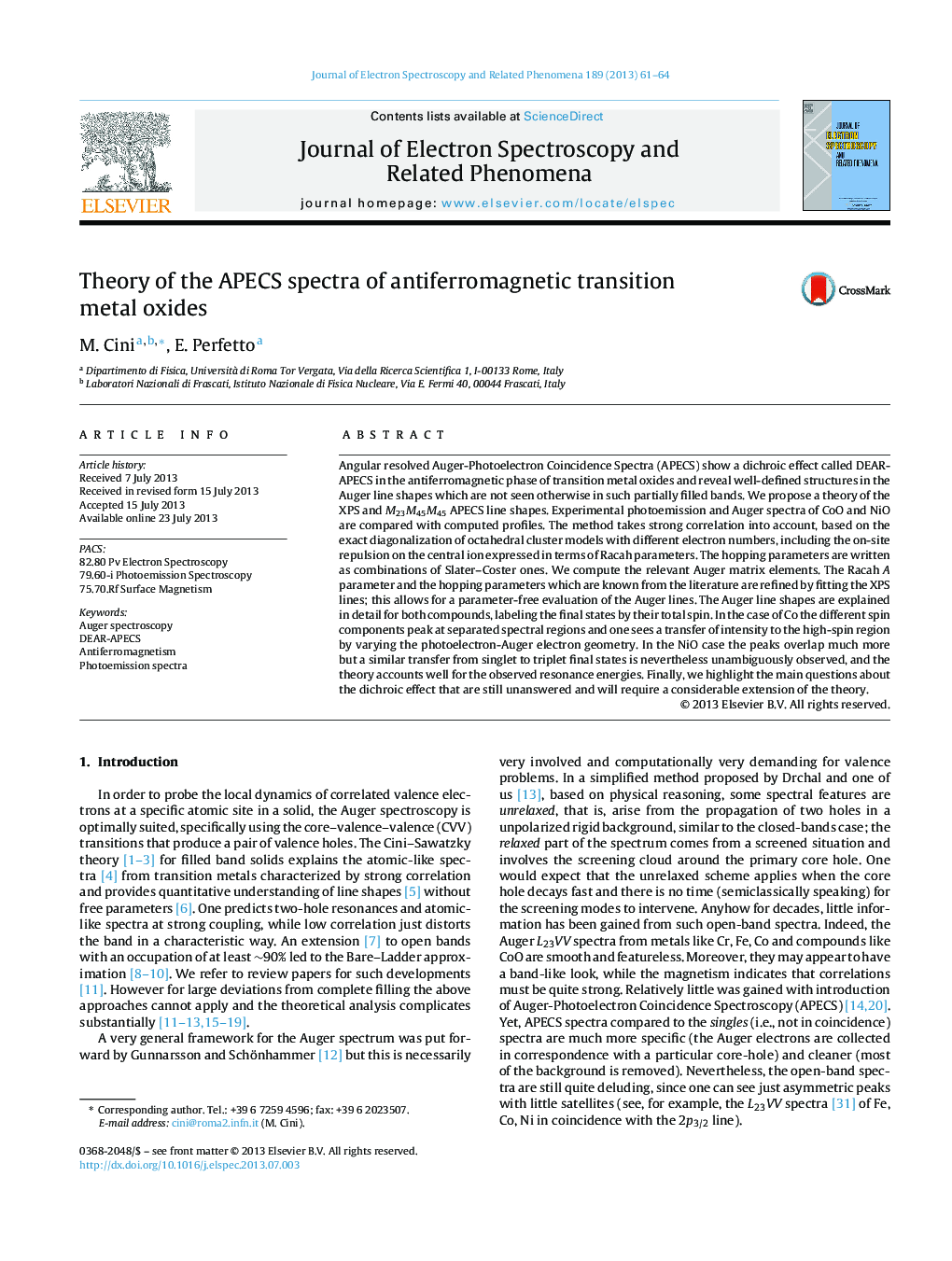| Article ID | Journal | Published Year | Pages | File Type |
|---|---|---|---|---|
| 5396102 | Journal of Electron Spectroscopy and Related Phenomena | 2013 | 4 Pages |
Abstract
Angular resolved Auger-Photoelectron Coincidence Spectra (APECS) show a dichroic effect called DEAR-APECS in the antiferromagnetic phase of transition metal oxides and reveal well-defined structures in the Auger line shapes which are not seen otherwise in such partially filled bands. We propose a theory of the XPS and M23M45M45 APECS line shapes. Experimental photoemission and Auger spectra of CoO and NiO are compared with computed profiles. The method takes strong correlation into account, based on the exact diagonalization of octahedral cluster models with different electron numbers, including the on-site repulsion on the central ion expressed in terms of Racah parameters. The hopping parameters are written as combinations of Slater-Coster ones. We compute the relevant Auger matrix elements. The Racah A parameter and the hopping parameters which are known from the literature are refined by fitting the XPS lines; this allows for a parameter-free evaluation of the Auger lines. The Auger line shapes are explained in detail for both compounds, labeling the final states by their total spin. In the case of Co the different spin components peak at separated spectral regions and one sees a transfer of intensity to the high-spin region by varying the photoelectron-Auger electron geometry. In the NiO case the peaks overlap much more but a similar transfer from singlet to triplet final states is nevertheless unambiguously observed, and the theory accounts well for the observed resonance energies. Finally, we highlight the main questions about the dichroic effect that are still unanswered and will require a considerable extension of the theory.
Related Topics
Physical Sciences and Engineering
Chemistry
Physical and Theoretical Chemistry
Authors
M. Cini, E. Perfetto,
